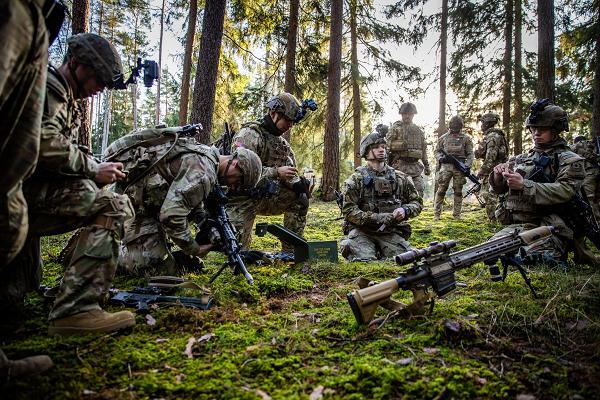
Vilseck, Germany. (February 15, 2024): Ambushes, flanking maneuvers, double envelopment, suppressive fire, these are the core infantry tactics employed by armies since the earliest days of warfare. In this photo by Specialist William Kuang, Soldiers with the 2nd Squadron, 2nd Cavalry Regiment prepare their weapons before heading into the bush. Platoon size units like these use flanking methods to close with and destroy the enemy.
In military strategy, flanking is attacking the opponent from the side rather than head on. This is done because the enemy's strength is usually concentrated at the front and you are more likely to find a “soft spot” or weakness hitting the enemy at the sides. The goal is to gain an advantageous position over an opponent by attacking where the enemy is least able to mount a defense.
Typically, this is done in one of three ways.
The first is the classic ambush where a unit sets up a surprise attack from a concealed position. Ambushes often follow the same flanking principle; one side opens fire while another takes a blocking position to prevent the enemy’s escape. The key to a successful ambush, of course, is to arrange fire teams in such a way to avoid confusion and friendly fire.
Another type of flanking maneuver is employed when a unit encounters an enemy in a fortified position. In this scenario, the goal is to “pin” the enemy in place using “suppressive” fire to prevent them from returning fire, retreating, or moving to meet a flank attack. Suppressive fire is defined as “inaccurate fires” designed to keep the enemy occupied while the attacking force concentrates on the flanks.
The third, and most complicated, flanking technique is the “double envelopment.” This maneuver was made famous by the brilliant tactician Hannibal in his victory over the Romans at the Battle of Cannae in 216 BCE. His “double envelopment” strategy involved attacking an enemy on both flanks simultaneously in order to encircle it. Using this tactic to devastating effect, Hannibal destroyed eight Roman Legions killing 70,000 and capturing over 10,000 prisoners.
All three of these techniques have been a consistent part of warfare since time immemorial and infantry troops need to be prepared to both attack the enemy’s flank and defend their position.


